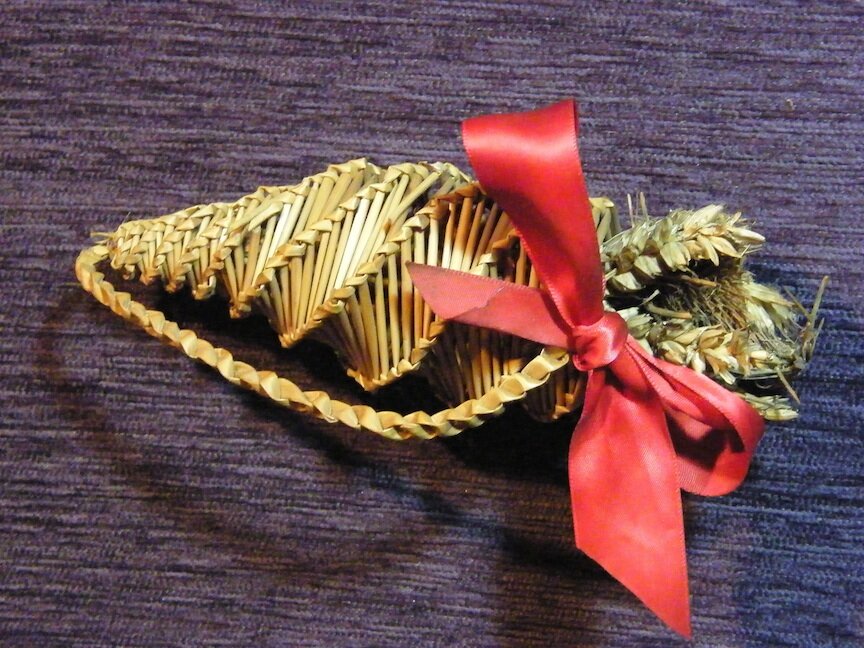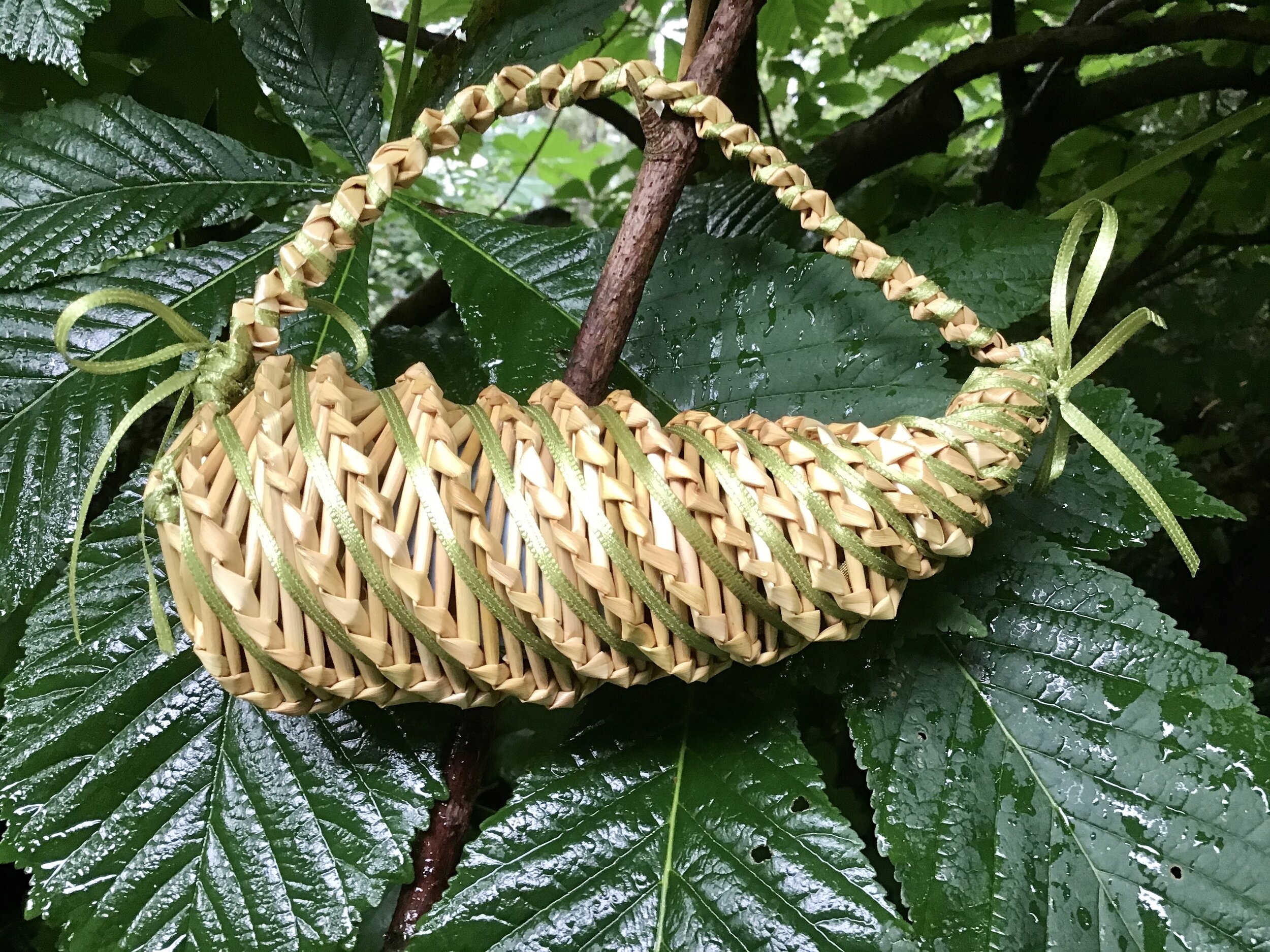My first encounter with the corn.
My first Corn Dolly
I was 6 years old when I brought my first corn dolly. We were on a school trip to a sheep farm in Kent, when I saw this beautiful object hanging above my head in the farm shop. While all the other children brought sweets, all I could see was this golden amulet of straw; suspended from the ceiling above me. I had no idea what it was? Although, at the very same time; it also felt curiously familiar?
I recall wanting to know what it was? What it was called? And even more importantly, why it had been made? Yet, no one seemed to have any idea, other than it was something to do with the harvest. It hung in my bedroom for years; an intriguing enigma; that continued to fascinate me.
It was not until I read my first book of Greek Myths that I began to unravel this strange objects ancient origins. While reading about the childhood of Zeus, The Father of the Greek Olympian Gods, I suddenly came across a very familiar image. There; unmistakably was my straw amulet, which in the myth they called a ‘‘Cornucopia’ or a ‘Horn of Plenty’.
It went on to tell the tale of the Titan Cronus and how he had overthrown his father Uranus. Then later he was to learn from an oracle, that he too ironically was destined to be deposed by one of his own children. To avoid this dire prediction, every time Rhea, his wife presented their newly born son, or daughter to Cronus, in response, he would swallowed them whole! By the time Rhea was expecting her last child, she had devised a plan, with their mother Gaia, to save this newborn from the same fate of his previous siblings. Soon after, Zeus was born in Crete. Instead of giving her husband the infant, she wrapped a rock in swaddling clothes & presented that in his place; which Zeus preceded swallow; believing it to be his new born son.
Zeus in this particular legend was then hidden from his father in a cave on Mount Ida. Protected by a nymph called Amalthea (which means Nourishing Goddess), whose pet goat fed the growing god. In similar myths, she is no longer a nymph, but a she goat, bearing the same name. They were both protected by the Kouretes in another version. Loyal solider’s that shouted, dance and clash their spears against their shield’s, to mask any noise that might give away the growing divine child within the cave.
Another version of this myth by Hyginus, tells of how Amalthea cleverly hide Zeus from the ever watchful eyes of his father, who ruled over Earth, Sea and Sky. Amalthea hung Zeus, dangling from a rope, tied to a tree above. Thus Zeus was invisible to Cronus, suspended as he was between the earth, air and water. Nourished daily with fresh goats milk and lulled to sleep by the gentle, warm Mediterranean winds.
As Zeus was no ordinary child, he soon began to exhibited unusual and divine attributes. One of which was his unnatural strength. While playing, he accidentally broke off the horn of the goat that fed him. This broken horn was then able, by his touch, to provide unending abundance & nourishment. Later known as ‘The Horn of Plenty’ or ‘Cornucipia ‘. So at long last I had found my answer!
Both the Greeks and Romans associated this symbol with prosperity and abundance, also linking it to the harvest. It is was overtime also attributed to several other deities. Such as Gaia; the grandmother of Zeus. Demeter (his older sister), the goddess of both agriculture and the harvest, who in turn presided over the fertility of the earth. As well as Fortuna, who to the Romans was the goddess of fortune and luck, known also as Tyche to the Greeks.
A Roman Imperial cult later depicted deities that fostered peace, such as Pax Romana; holding a Cornucopia. As well as the goddess Abundantia, or Abundance, a personification of the goddess of the grain supply to the city of Rome, Annona. It was not only goddess that were linked to this symbol, even Hades, Ruler of the Underworld (brother to both Demeter and Zeus), who ruled over agriculture and the riches of the earth, such as its mineral wealth, who can often be seen holding A Horn of Plenty or Cornucopia.
Both the legendary goat and its horn were said to have been placed amongst the stars by Zeus, in gratitude for Amalthea care. They are each part of the constellation of Capricornus or Capricorn. The root of this particular constellations name being derived from two Latin words. ‘caprum’, which means goat, and ‘cornu’ meaning horn. Thus Capricorn today is translated as goat horned.
The etymology of the name Cornucopia is very similar. Cornu once again meaning horn, while the word copiae, is translated as meaning plenty. As does the word Copious, which usually means yielding something abundantly. Which also explains where we get the name ‘Horn of Plenty’ .
I still cherish my first straw emblem, which hangs in our larder; as is traditional. It ensured that you never hungered, or went without. It has in its own way brought amazing abundance into my life, in so many different ways! When we first moved to Ireland in the early 90’s, I was unable to apply for a job as a Ranger on The Burren, as I had hoped; as I lacked an Honours Irish qualification. In fact I had no Irish at all, so was totally unsure exactly what work to do now; as a stranger in this strange land?
However, thanks to sharing with others both the creation, history and folklore of this very ancient craft, it led me in a very unusual & unexpected ways to working as a heritage Straw Worker. A job I have loved and now wish to share in a far magical way! I hope now to offer that same abundance with others, by creating unique and bespoke charms, amulets and talismans. May that abundance always flow freely to those most in need!
Melanie )0(



